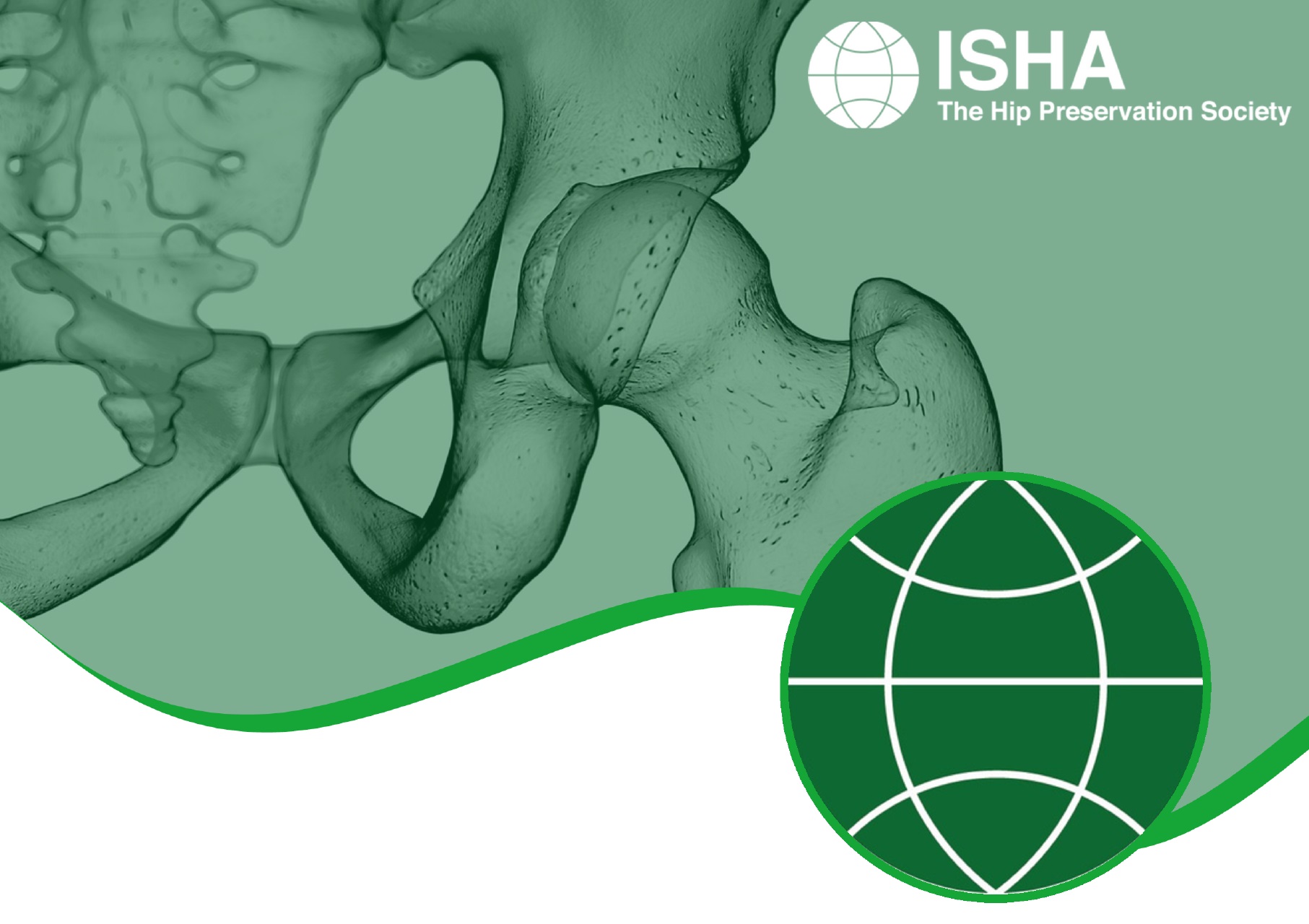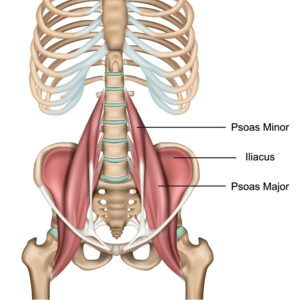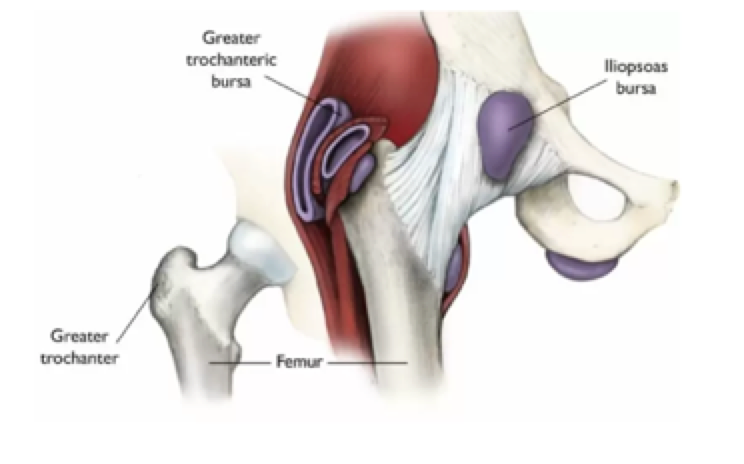
Patient Information from ISHA – The Hip Preservation Society
Psoas Related Injuries and Conditions
Psoas Related Injuries and Conditions
Definition
The psoas muscle (including psoas major and psoas minor when present) extends downwards from either side of the lumbar spine, through the pelvis and abdominal are where it joins with the iliacus muscle forming the iliopsoas muscle. Both muscles, once converged, attach via the iliopsoas tendon onto the lesser trochanter of the hip joint. A large bursa lies between the hip joint and the tendon attachment.
Both the psoas and iliacus muscles are hip flexors bringing the thigh towards the chest in activities such as walking, running and jumping. When their distal end is fixed, hence stabilising the hip joint, these muscles act to bend the trunk forwards from the lying position.
In addition, when contracting on one side only, psoas produces side bending at the lower spine.
Conditions affecting the iliopsoas include:
- Iliopsoas tendinitis
- Iliopsoas bursitis
Iliopsoas tendinitis and bursitis, whose treatments are similar, often co-exist and can be difficult to separate. Both conditions are frequently the result of overuse injuries and are more prevalent in runners as well as in athletes involved with kicking sports, dancing and high jump.
Iliopsoas tendinitis can also be a soft tissue complication occurring after a total hip replacement where the tendon becomes inflamed due to the placement of the prosthetic hip joint. Movement of the implanted hip into extension (taking the leg behind the body) can cause inflammatory changes in the surrounding soft tissues including the iliopsoas tendon causing impingement and tendinitis.

Individuals with hip dysplasia where hip joint function is affected by bony abnormalities, the muscles that act to stabilise the lower back and hip, i.e. psoas and iliacus, and also the deep gluteal muscles, may overwork increasing the risk of over-use injuries and consequent problems with these muscles and tendons.

Signs and Symptoms
- Groin pain
- Pain which can radiate down front of thigh as far as the knee
- Audible snap or click which may be associated with internal hip snapping syndrome
- Anterior knee pain caused by patellar tendinitis resulting from a tight iliopsoas muscle
- As the condition progresses any intermittent pain may become more constant lasting throughout both activity and whilst at rest
- Pain aggravated by specific movements such as putting on socks and shoes, rising from sitting, climbing stairs and inclines
- Any tendinitis may worsen from repeated trunk flexion when accompanied by hip flexion
Left: Illustrating location of illiopsoas bursa (Grosvenor Orthopaedic Partners, 2024)
Diagnosis
This can be difficult and take time to confirm. Eliminating other causes is vital as the symptoms can mimic other conditions occurring around the hip and pelvis. Imaging will form a large part of the diagnostic process as well as the use of diagnostic injections using local anaesthetic to confirm the location and hence probable cause of symptoms. X-ray, ultrasonagraphy and MRI are often necessary.
Non-Surgical Treatment
Non-surgical aims are to reduce pain, spasm and swelling. This would be followed by a graduated return to activities of daily living. Treatment options could include:
- Medication including NSAIDs
- Ice
- Rest
- Physiotherapy including gentle stretching, activity modification, exercises to gradually improve stability, ROM, strength, endurance, proprioception
- Image guided corticosteroid injections
Surgical Treatment
This is rarely necessary as non-surgical treatments are often successful. Where symptoms persists either open or minimally invasive arthroscopic surgery may be required to address any damage to affected tendons. If the psoas pain is secondary to a total hip replacement, arthroscopic psoas tenotomy or repositioning of hip replacement components may be needed.
What to expect after surgery
Recovery following arthroscopic surgery is generally quicker than after an open procedure and hence returning to activities is also easier. Any return to sport will also depend on operative findings, and advice will be provided by the treating hip preservation surgeon and physiotherapist.
There may be limitations to weightbearing and activities during the initial stages of recovery, which will vary amongst surgeons and will depend on operative findings and techniques performed.
Physiotherapy can begin after surgery, gradually increasing range of movement, stability, strength, mobility and function over a period of up to six months, depending on the surgery performed and individual aims.